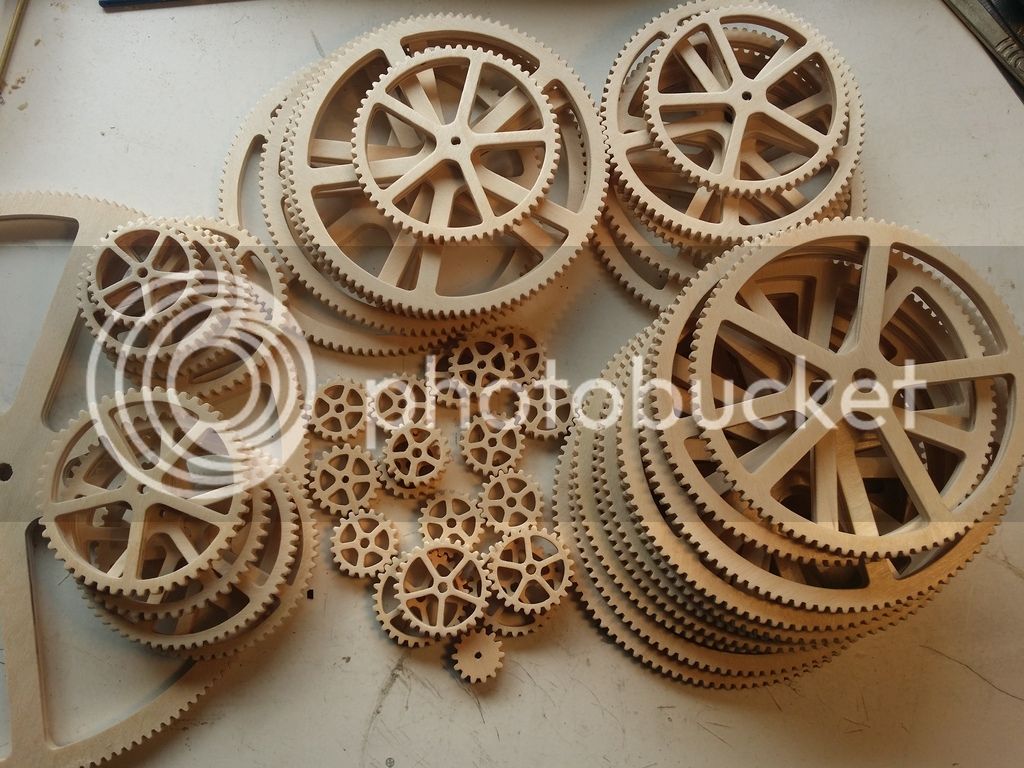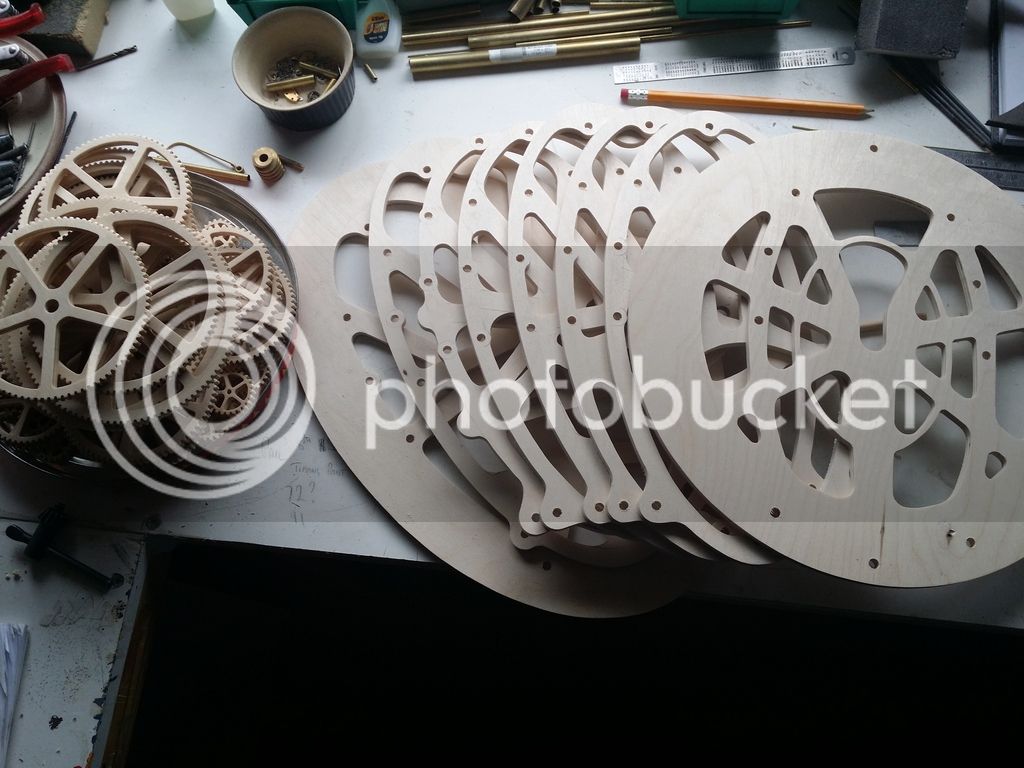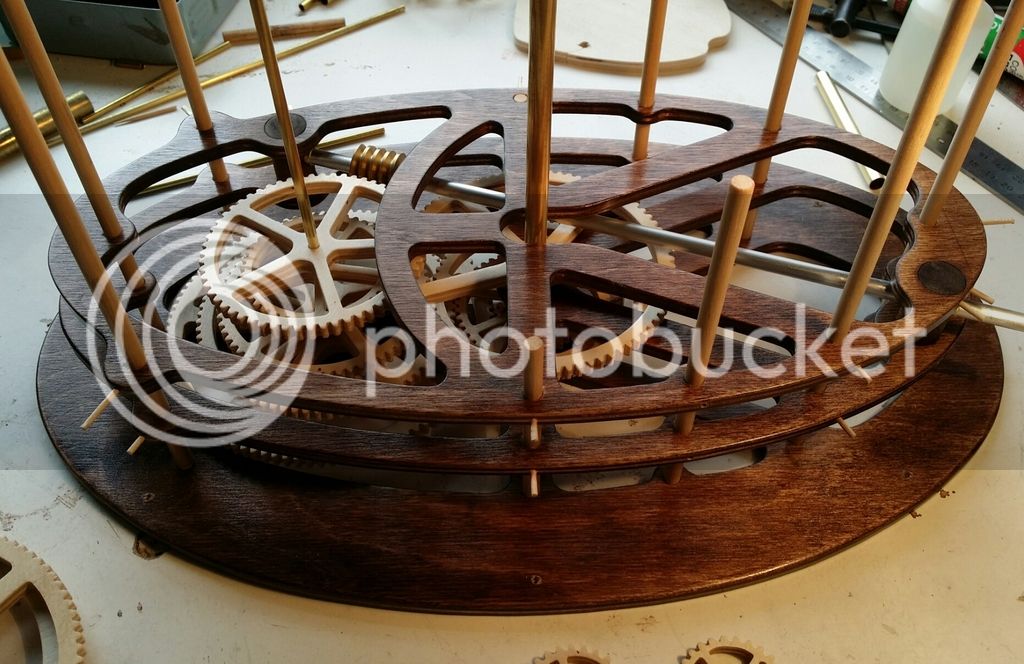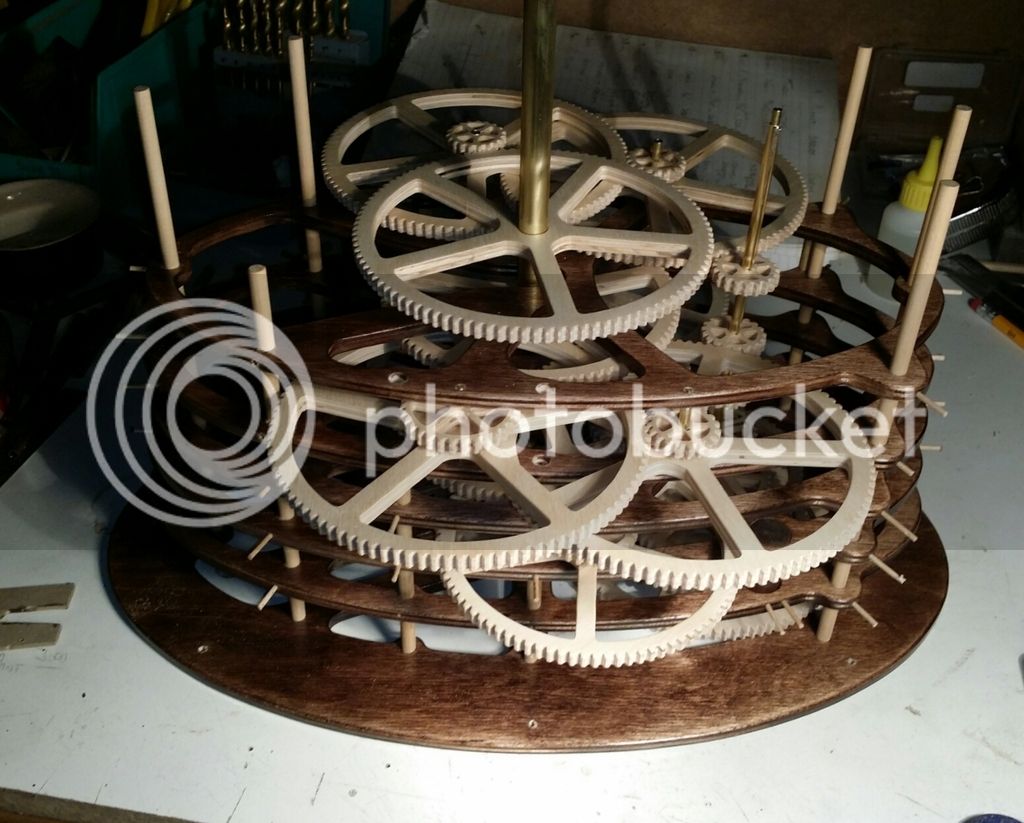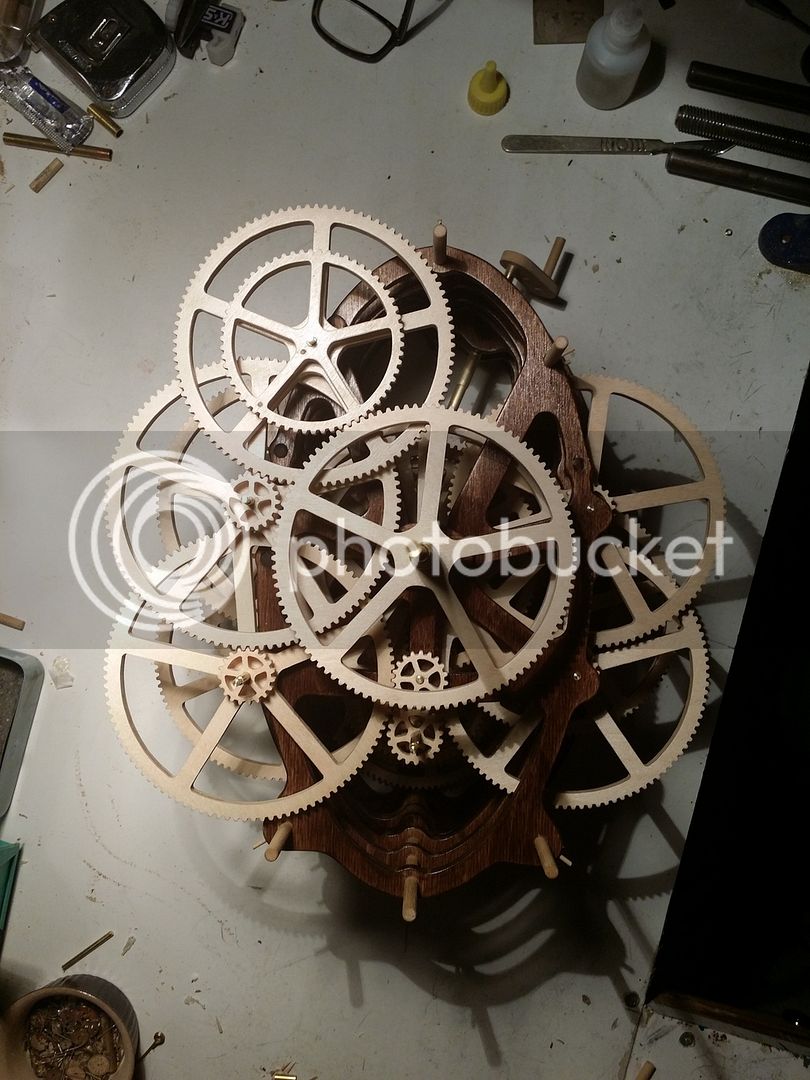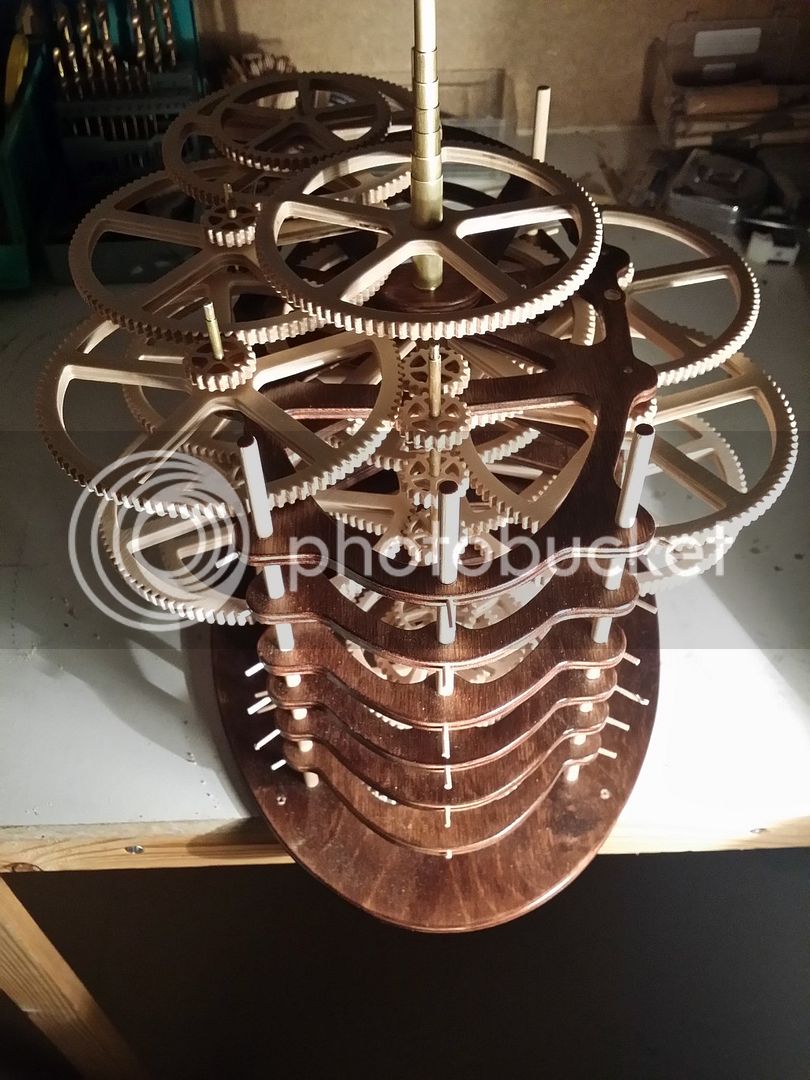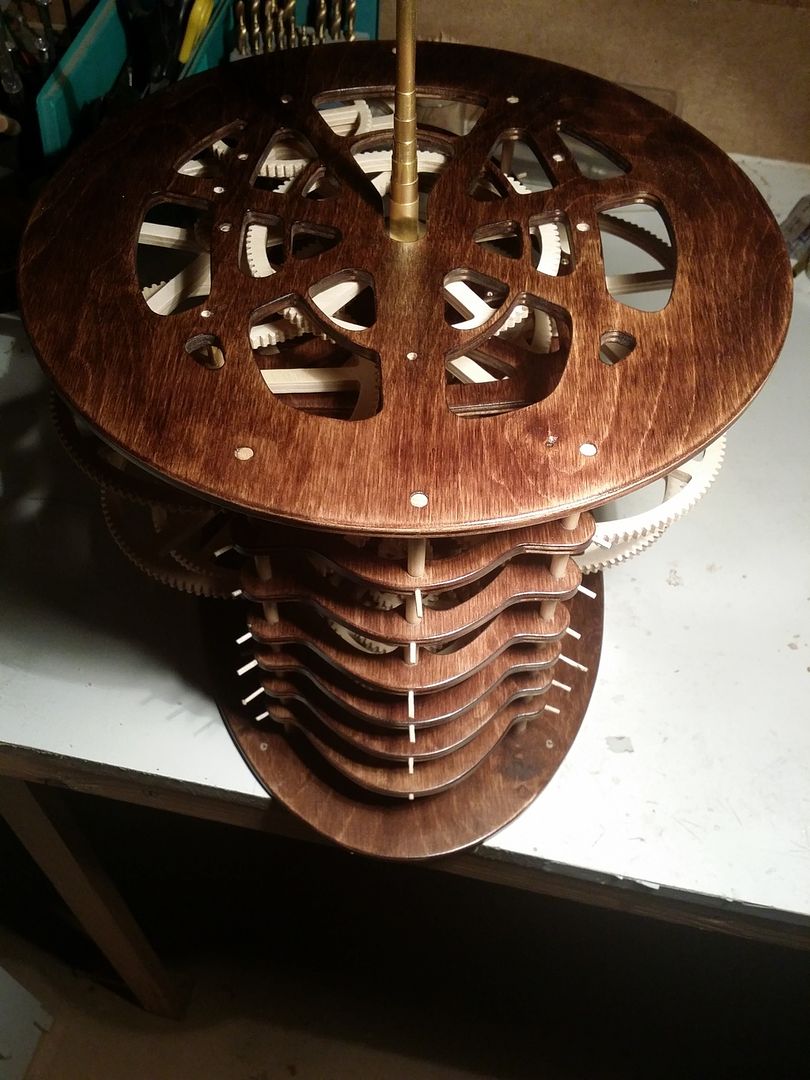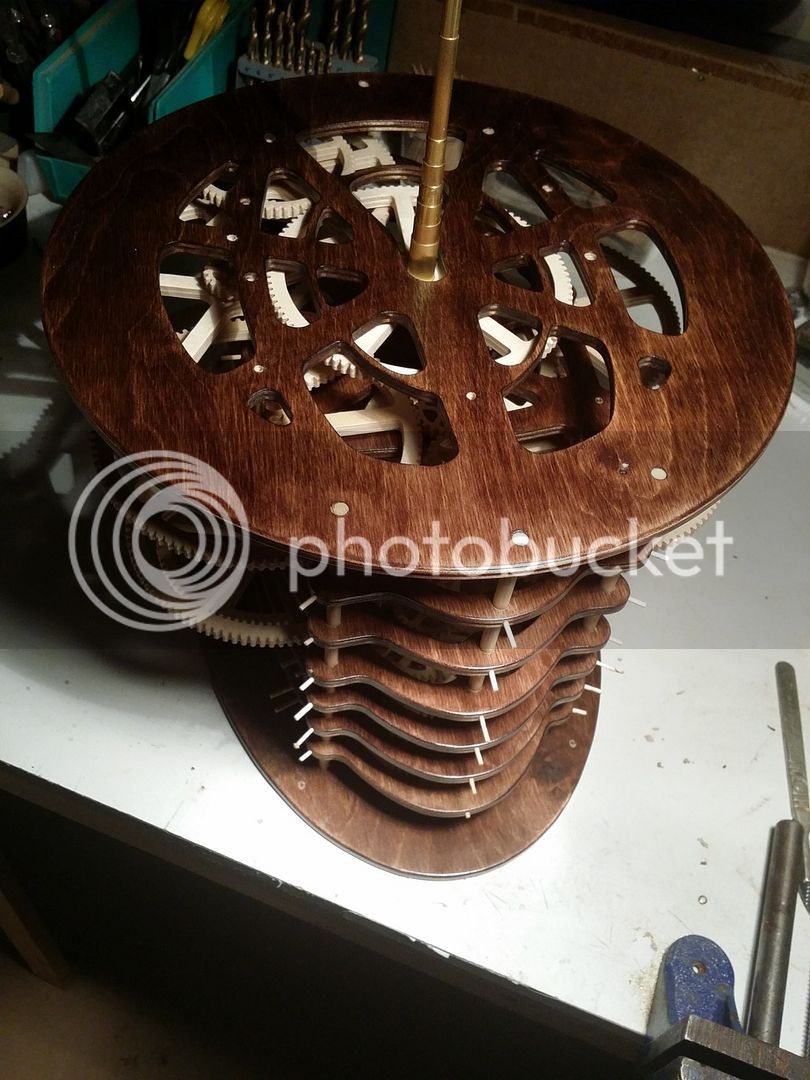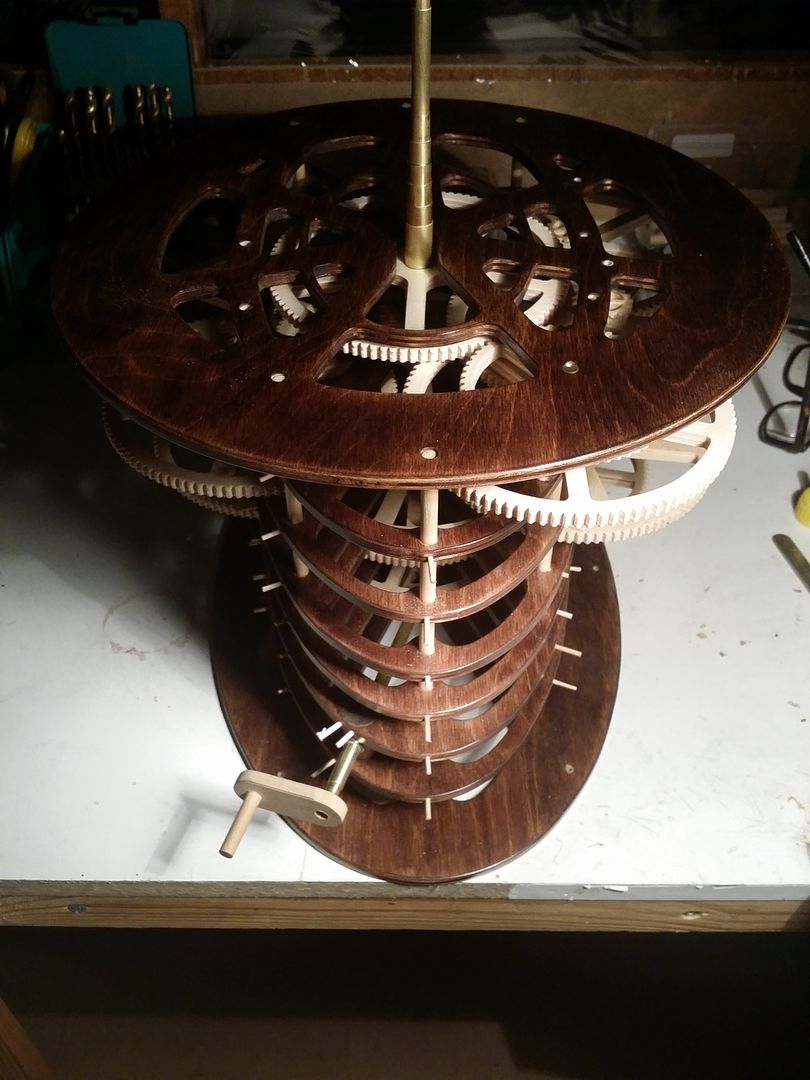Mechanism Man":3pscywxy said:
1) Pre print your gear pattern - just type 'gear generator' into Google to find a great free to use one. This will let you set the tooth spacing in mm, number of teeth etc. Print the pattern with all the extra printed bits turned off apart from the gear itself, spokes if you want them, and the gears center. Don't print the measuring grid, line of tooth contact and all the other bits - turn 'em off!
I'm assuming you mean this one:
http://woodgears.ca/gear_cutting/template.html
Coming from a DTP/Print background I have a couple of comments, not on his gears, but printing 'em accurately.
His measuring check marks are the full 210mm width of the page. Since many printers won't quite print to the edge, this is not universally good.
Further, he only provides width marks, not depth marks, and whilst printers may be pretty darn accurate, it is common for the width:depth ratio to be a little off (so printed circles become printed ellipses).
He does suggest checking the printed gears carefully :
" Its best to check that the diameter is consistent along the vertical, horizontal, and diagonal to be sure there is no distortion. "
But doesn't have any suggestions should these checks fail.
I think an answer is to print the gears to a PDF "printer"; these are readily available for download, and instead of the data going to a physical printer, you get a PDF file on your computer.
This means you have an editable (via e.g. Inkscape) vector representation of the gears. If you add known width and depth lines (but not right to the edge) you can make a test print.
Use measurement from the test print to scale (again, Inkscape of similar) the drawing, separately in width and depth if needed, so that the final print should be perfect (as long as the errors on your printer are consistent).
This complexity is probably not needed for large teeth on small gears, but if you're pushing the limits, it might be rather helpfui.
BugBear










